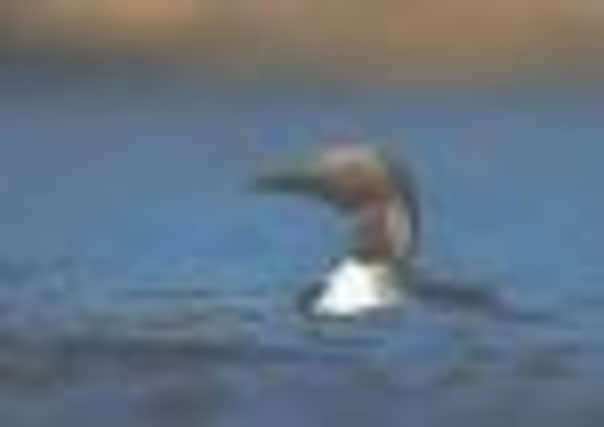A manmade habitat solution has helped a native Highland species from taking a dive


It is also one of our most beautiful birds, and is well captured by the respected naturalist Mike Tomkies, who studied black-throated divers on a remote loch in the north-west Highlands. In his book On Wing & Wild Water, he wrote of one female bird: “The colours of her summer plumage were so startling they seemed unreal, as if they had been painted on by a great artist.”
Ornithologists generally class divers as being among our more primitive birds. The legs are set well back on the body, which while making them excellent paddlers and underwater swimmers, has the flip side in that they are hopeless and ungainly on land and hardly able to walk.
Advertisement
Hide AdIt is this feature that makes the black-throated diver peculiarly vulnerable during the breeding season. Their restricted ability on land means that they have to nest as close as possible to the water, and if the water level should rise by a few inches, then the eggs are flooded out. Similarly, a drop in water level can leave the nest high and dry, with the parent birds unable to gain access.
It was noted in the late 1980s that fluctuating water levels was a major reason for nesting failure in the bird’s strongholds in the north-west Highlands. With a population of only around 190 pairs, the black-throat was one of our more fragile species and this is why the RSPB at the time moved quickly to give the bird a helping hand by providing nesting rafts in a number of strategic lochs.
Constructed from polystyrene and wood and covered in turf, these natural-looking floating islands quickly proved attractive to the divers and at a stroke removed the threat of varying water levels.
Stuart Benn, RSPB conservation officer for South Highland, says the project, which began in the early 1990s and is ongoing, has given the bird a much- needed boost.
“The black-throated diver is a very aquatic bird and needs to nest close to the water’s edge,” he says. “A lot of the water bodies where they are found are lochs with hydro dams and the water level can fluctuate a lot.
“The nesting rafting project was rolled out through the 1990s and has proved very successful. In general, the nesting success is three times greater on a raft compared with birds nesting on natural shore or island locations.
Advertisement
Hide Ad“There are now 50 more breeding pairs of black-throated divers than there were at the start of the project and we believe a large part of this increase can be attributed to the nesting rafts. As the population has increased, birds have expanded from their core range and are now turning up in new areas.”
Scotland is also home to breeding red-throated divers, but this species nests on small tarns and lochans, which are not so susceptible to water level changes compared with the larger lochs preferred by black-throats.
Advertisement
Hide AdKnown as the Arctic loon in North America, black-throats lose their vibrant breeding colours during autumn and winter and become rather dowdy birds, moving to the coast and often being seen in sheltered areas such as the Firths of Forth and Clyde.
Benn maintains that the black-throat is one of Scotland’s most special birds and it is gratifying that the success of the raft project has helped secure its status in this country as a breeding bird.
“The black-throated diver is truly deserving of our protection. The plumage is incredibly immaculate and there never seems to be a feather out of place. This bird really brings something special to the Scottish Highlands.”